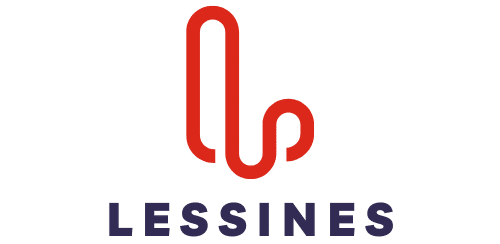How to Optimize a UK Grocery Store’s Supply Chain for Better Freshness and Reduced Waste?

You, as UK grocery store operators, are constantly grappling with the challenge of keeping your food fresh while minimizing waste. Between spoilage, damaged goods, and items that merely don’t sell before their sell-by date, grocery retailers are infamously plagued by high levels of waste. This waste doesn’t simply represent lost profits, but it also contributes to environmental damage and misses the opportunity to feed those in need. Thankfully, advancements in supply chain management and retail technologies can help you significantly reduce your store’s waste levels while ensuring your customers always have access to fresh, high-quality products.
Leveraging Data to Predict Demand
The first step to reducing waste and improving freshness starts with better demand prediction. By leveraging data from past sales and incorporating factors like seasonality and promotional events, you, as retailers, can forecast demand more accurately, enabling you to order the right amount of each product.
A découvrir également : What Are the Legal Considerations for UK Companies Using Drones for Commercial Purposes?
Combining historical sales data with real-time data can lead to more accurate demand predictions. By using machine learning algorithms, it’s possible to identify patterns and trends that might not be evident at first glance. This data-driven approach can provide you with valuable insights into customer shopping habits and preferences.
For instance, you might notice that sales of a particular fruit spike in the summer months. By purchasing more of that fruit during the summer and less in the off-season, you can ensure you’re meeting customer demand without overstocking and risking waste.
Dans le meme genre : What Are the Challenges of Digital Transformation for UK-Based Family Businesses?
Using data for demand prediction also allows for more efficient inventory replenishment. When you know what products are likely to sell and when, you can set up automated ordering systems that ensure you’re never out of stock, but also never overstocked.
Optimizing the Food Supply Chain
Beyond predicting demand, reducing waste and improving freshness also involve optimizing the food supply chain. From farm to store, there are many opportunities along the chain to improve efficiency and reduce waste.
You should consider working closely with your suppliers to reduce lead times and improve the freshness of various food products. Shorter lead times mean less time for products to sit in warehouses, reducing the risk of spoilage and waste. You can also work with suppliers to stagger deliveries, avoiding the sudden influx of products that can overwhelm your store and lead to waste.
Another critical step in optimizing the supply chain involves temperature control. As most food products are sensitive to temperature changes, ensuring that the products remain at a consistent, optimal temperature during transit is crucial for maintaining freshness.
Implementing Just-in-Time Inventory Management
Another effective way to reduce waste and improve freshness is to adopt just-in-time (JIT) inventory management. JIT is a method that aims to minimize inventory levels by scheduling materials to arrive exactly when they are needed. In the context of a grocery store, this means getting products from the supplier to the shelf just in time to meet customer demand.
By minimizing the time products spend in your store before they are sold, you can greatly reduce the amount of waste your store generates. JIT also helps ensure that the products on your shelves are as fresh as possible, enhancing the shopping experience for your customers.
However, JIT requires careful planning and coordination between you, your suppliers, and your store staff. It also requires robust data and tracking systems to ensure that products arrive when they are needed, not before or after.
Using Technology to Minimize Waste
In the digital age, technology provides a plethora of tools to help you minimize waste and improve the freshness of your products. Advanced inventory management systems can track the freshness of products, alerting you when items are nearing their sell-by date so you can take action.
Mobile apps can also be used to alert customers of products that are nearing their sell-by date and offer them at a discount, helping to reduce waste. Other apps can help you plan your orders more effectively, taking into account factors like predicted demand and lead times.
Additionally, implementing a robust customer relationship management system can help you understand customer buying habits better, allowing you to tailor your product offerings and reduce waste further.
By combining these strategies and technologies, you can significantly reduce waste in your grocery store while ensuring your customers always have access to fresh, high-quality products. This not only improves your bottom line but also contributes to a more sustainable and ethical retail sector.
Ensuring Shelf Availability and Freshness with Machine Learning
The application of machine learning to your grocery retail operations can vastly improve your ability to manage inventory levels and ensure shelf availability of fresh products. Machine learning algorithms are capable of detecting patterns and making predictions based on vast quantities of data. They can process historical sales data, current inventory levels, and even outside factors such as weather patterns or local events, and use this information to predict future demand.
Using machine learning can help you as a retailer to maintain ideal inventory levels, which is particularly crucial when dealing with perishable products with a short shelf life. Overstocking leads to waste as unsold products spoil, while understocking can result in lost sales and disappointed customers who can’t find the products they’re looking for.
Moreover, machine learning can help you optimize the allocation of shelf space. By analyzing sales data, you can identify which products are most popular and deserve more shelf space, and which products are underperforming and can be given less space. This not only helps to increase sales but also contributes to waste reduction by ensuring that fast-selling, fresh products are always available for your customers.
Don’t overlook the importance of maintaining a high level of service. Machine learning can help here too, by predicting busy periods and helping you to plan staffing levels accordingly. This ensures that shelves are restocked promptly, and customers are served efficiently, leading to a more satisfying shopping experience.
Developing Minimum Order Quantities to Reduce Food Waste
Another strategy to reduce food waste and optimize the grocery supply chain involves establishing minimum order quantities for your suppliers. By setting minimum order quantities, you effectively balance the need to have enough stock on hand to meet customer demand with the goal of reducing food waste.
This approach requires a deep understanding of your product’s demand patterns, which can be facilitated by the data analysis and machine learning techniques mentioned earlier. It involves identifying the optimal order quantity that minimizes the risk of stockouts (where you run out of a product) whilst also reducing the risk of having excess stock that ends up going to waste.
This strategy also requires close collaboration with your suppliers. In some cases, suppliers may need to adjust their production and delivery schedules to accommodate your minimum order quantities. This cooperation can lead to a more efficient supply chain, with benefits for both you as the retailer and the supplier.
This method also benefits the environment by reducing your store’s carbon footprint. By making fewer, more accurate orders, you’re cutting down on the transportation and packaging waste associated with frequent, smaller deliveries.
Conclusion
Optimizing a UK grocery store’s supply chain for better freshness and reduced waste is a complex task that requires a multifaceted approach. By leveraging data to predict demand, optimizing the food supply chain, implementing just-in-time inventory management, and using technology to minimize waste, you can make significant strides in reducing food waste and improving the freshness of your products.
Incorporating machine learning into your retail operations can improve your ability to manage inventory levels and ensure the availability of fresh products on your shelves. Concurrently, establishing minimum order quantities with your suppliers can help balance customer demand with reducing food waste.
These strategies not only improve your bottom line but also contribute to a more sustainable and ethical grocery retail sector. They can enhance your customers’ shopping experience, boost your store’s reputation, and play a part in tackling the wider issue of food waste in the retail industry.
